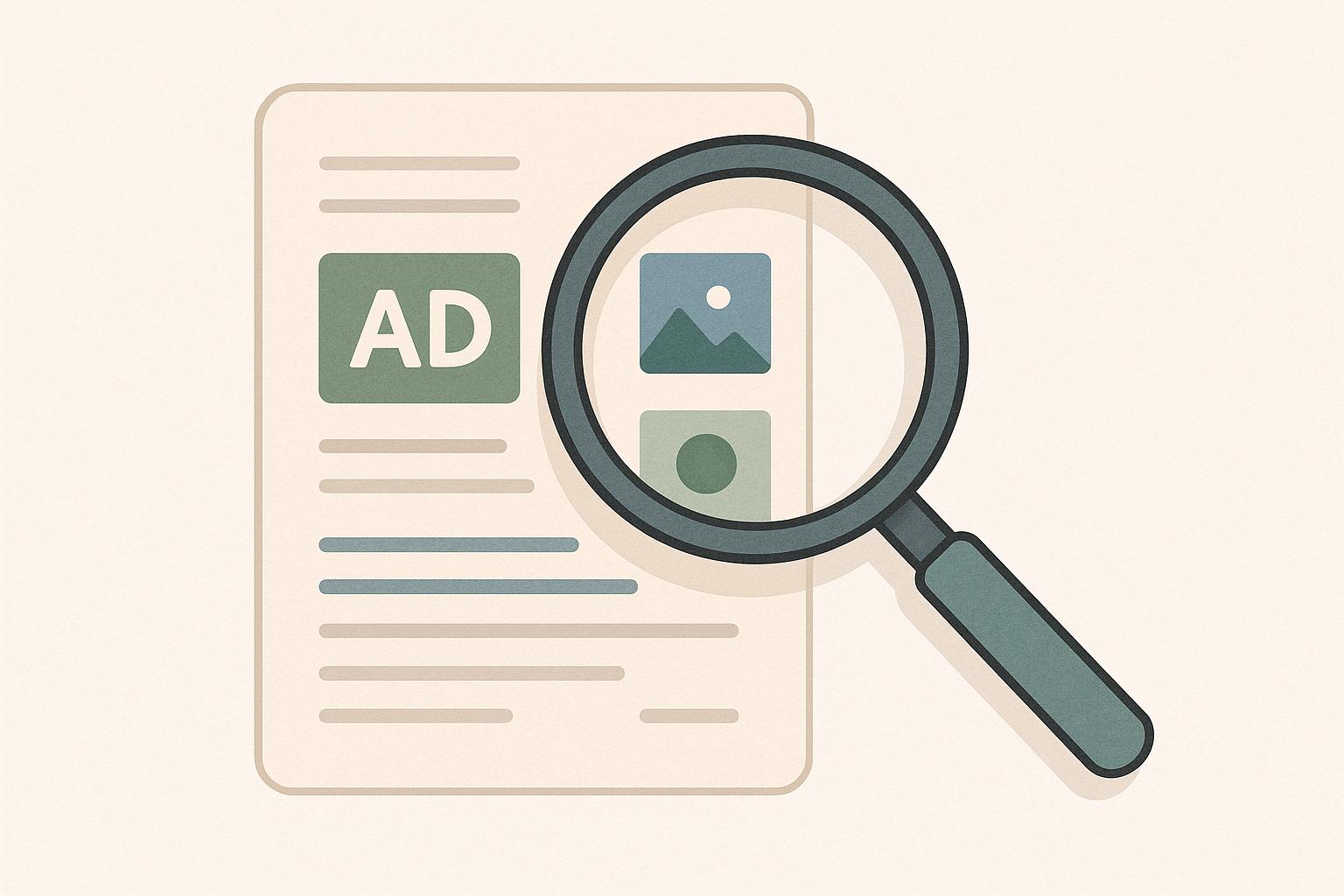Ultimate Guide to Competitor Ad Copy Analysis
Competitor ad copy analysis helps you understand your rivals’ advertising strategies to improve your own campaigns. By examining their messaging, offers, and performance, you can make informed decisions, avoid costly mistakes, and discover opportunities to stand out. Here’s what you’ll learn:
- Why it matters: 76% of marketing budgets are wasted. Analysing competitors helps reduce waste and improve ROI.
- Key tools: Use platforms like Google Ads Auction Insights, SEMrush, SpyFu, and WhatConverts to gather data on competitors’ keywords, ad spend, and messaging.
- Step-by-step process: Identify competitors, gather their ad data, review messaging, compare performance metrics, and refine your strategy.
- Practical examples: Brands like Hairy Baby and Nava Health have achieved significant growth by applying insights from competitor analysis.
Competitor analysis isn’t a one-time task – it’s an ongoing effort to stay ahead in a fast-changing market. With the right tools and approach, you can create ads that resonate with your audience and outperform the competition.
🥷 3 FREE Tools To Spy On Your Competitors’ Ad Copies
Tools for Competitor Ad Copy Analysis
Analysing competitor ad copy is no longer a guessing game – tools can transform vague assumptions into precise insights. Each tool sheds light on different aspects of your competitors’ strategies. Here’s a closer look at some of the most effective options.
Google Ads Auction Insights
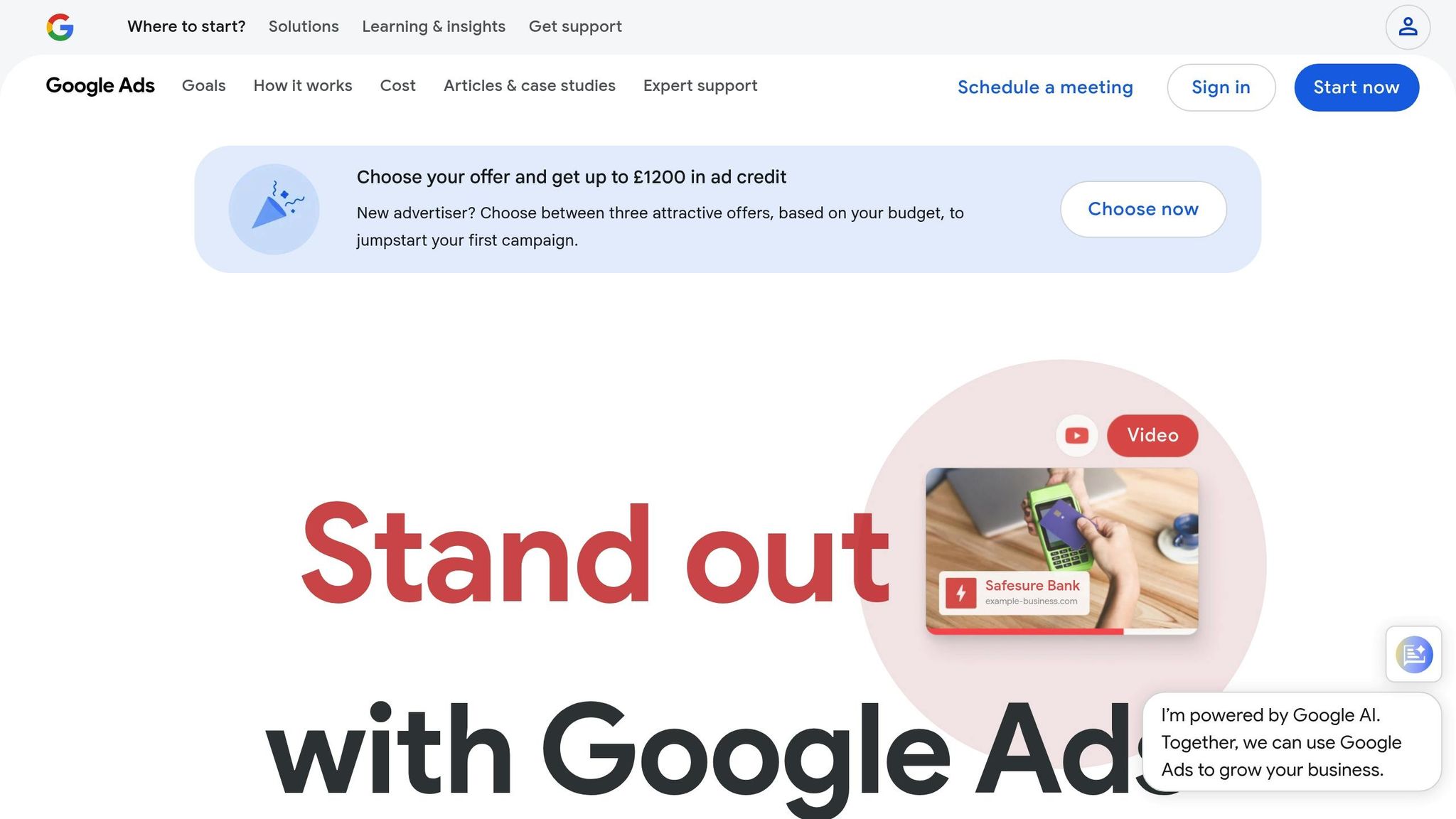
Google Ads Auction Insights is an excellent starting point for understanding the competitive landscape. This free tool within Google Ads provides key metrics about your paid search competitors. It highlights data like impression share overlap, outranking share, and average position, helping you assess how your campaigns stack up against others. Additionally, it identifies businesses that frequently appear alongside your ads, including those from related sectors or local competitors. This targeting ensures your deeper analysis focuses on the right players.
SEMrush

SEMrush goes beyond surface-level data, offering access to over 20 billion keywords. It dives into the psychology behind competitor messaging, revealing their value propositions, emotional triggers, and calls-to-action. You can uncover top-performing keywords and review historical ad data to see how competitors’ messaging has evolved. The platform also provides insights into creative variations, showing the different ad copy versions competitors have tested. By linking keyword research with ad copy analysis, SEMrush helps you understand how search intent aligns with messaging strategies.
SpyFu
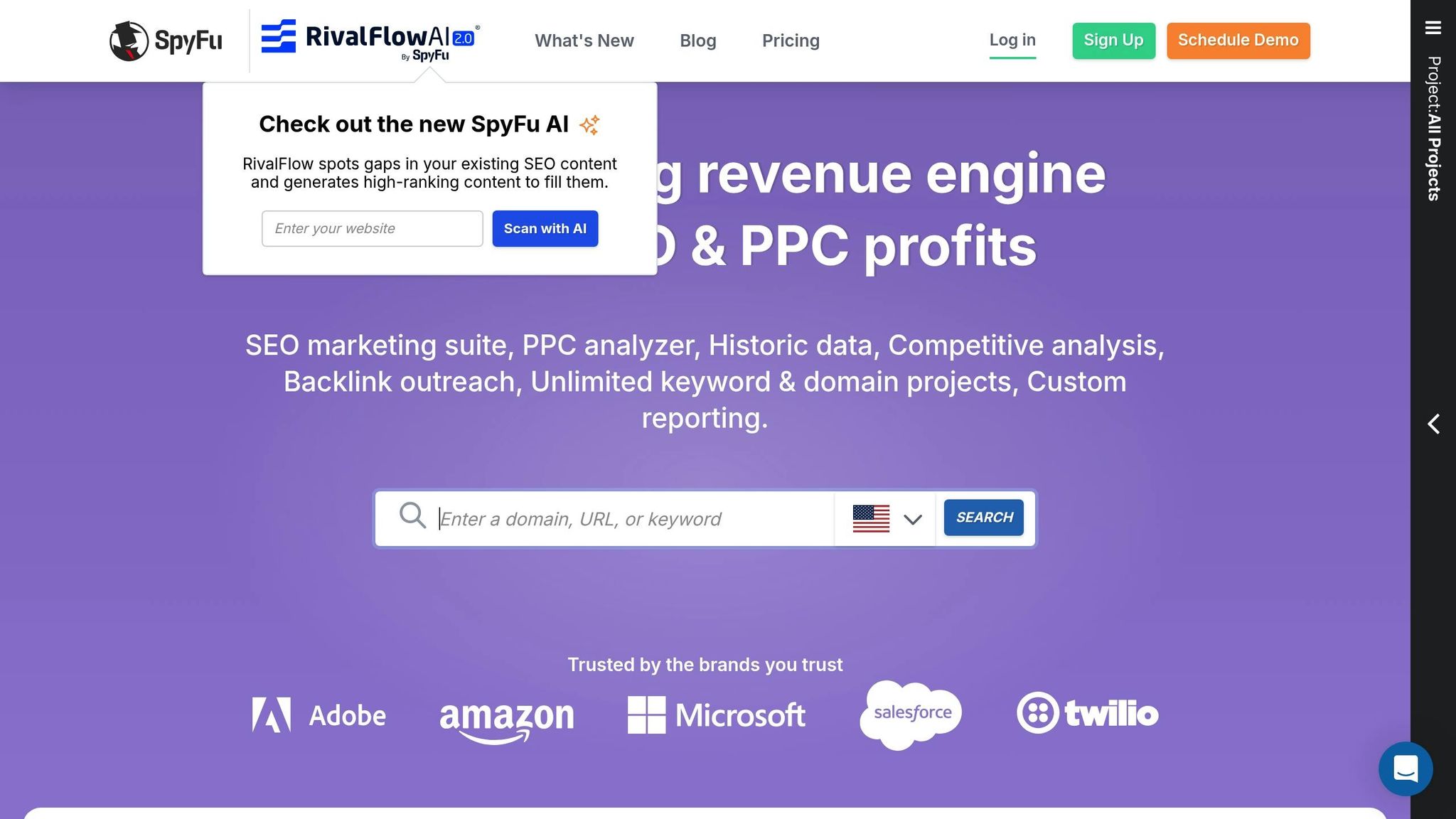
SpyFu specialises in competitive intelligence, offering historical data dating back to 2006 and covering billions of results across 109 million domains. The tool tracks competitor ad spend, keyword strategies, and changes in ad copy. You can search for a competitor, download their PPC keywords, and see metrics like click volume and cost-per-click. SpyFu also allows unlimited searches and data downloads. Pricing starts at £33 per month (when billed annually) for the Basic Plan or £58 per month for the Professional Plan. Rachel Ober, Digital Marketing Project Manager, highlights its value:
"The amount of information you can see for your industry is insane! This is so valuable for anyone wanting to know what their competitors are doing in the market and get ahead!"
WhatConverts
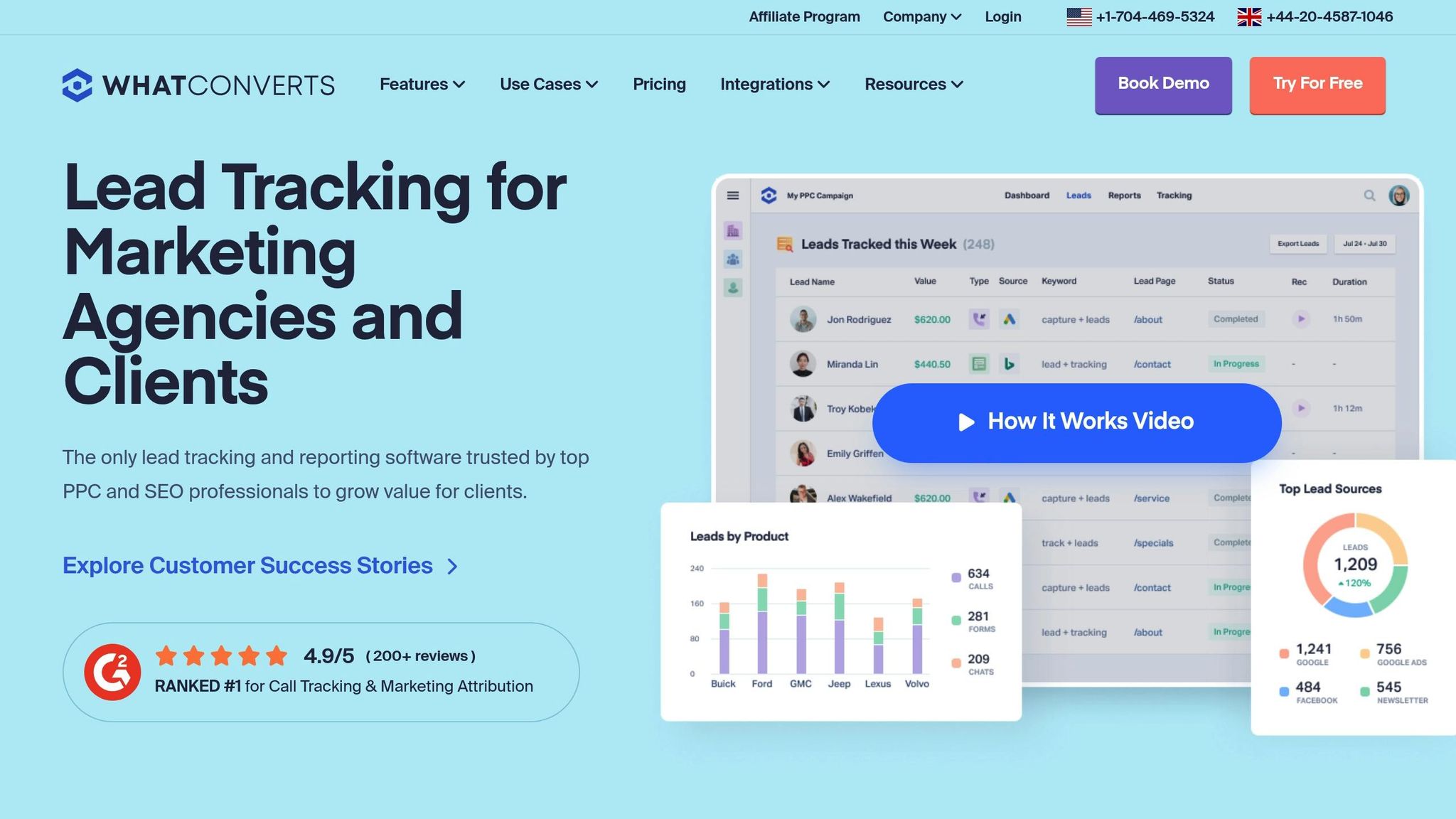
WhatConverts links ad copy performance directly to qualified leads and ROI, offering a clear view of which competitor strategies deliver actual business value. For example, in a November 2024 case study, a car dealership in Connecticut tested different Google Ads targeting used car buyers. Each test was labelled as a "variant." Variant A brought in only two qualified leads but generated £135,000 in total value, whereas Variant C attracted four leads but accounted for just £16,600 in value. This case study underscores the importance of prioritising strategies that attract high-value customers over simply increasing lead volume.
A Combined Approach
Using these tools together creates a multi-layered strategy for competitor ad copy analysis. Start with Google Ads Auction Insights to identify your key competitors. Then, leverage SEMrush or SpyFu for detailed intelligence on their messaging and keyword strategies. Finally, apply WhatConverts to pinpoint the approaches that generate the most meaningful business outcomes. This combination ensures you’re not just analysing competitors but also translating insights into actionable results.
How to Analyse Competitor Ad Copy: Step-by-Step Process
Turning competitor data into practical insights can be a game-changer for your PPC strategy. Instead of aimlessly collecting ad examples, a structured approach ensures you gather meaningful information without feeling overwhelmed.
Finding Your Competitors
Your competitors in the digital space may not always match those you face offline. Online, you might discover unexpected rivals targeting the same audience, making it essential to identify them before diving into analysis.
Start by tapping into your sales and marketing teams’ knowledge – they interact with prospects daily and often hear which companies come up in conversations. For instance, 42connect uses keyword research to uncover competitors. By running key terms and reviewing top results, they identify companies that frequently appear and create a shortlist. It’s also important to distinguish between competitor types: direct competitors offer similar products or services, while indirect ones address the same customer needs differently. To stay ahead, label your top-performing keywords in bidding tools and set up automated search impression share reports for your key campaigns.
Once you’ve nailed down your competitor list, you can move on to gathering detailed ad copy data.
Gathering Ad Copy Data
With your competitors identified, the next step is to systematically collect their ad copy to uncover patterns in their strategies.
Pay close attention to their headlines, calls-to-action (CTAs), offers, and pricing. This not only sparks ideas for refining your own messaging but also provides insight into how they capture their audience’s attention. Tools like SpyFu can help you break down competitors’ ad creatives, analysing everything from headline structures to emotional triggers and offers. Look for recurring themes across multiple ads – these often indicate successful messaging that resonates with your shared target audience.
Reviewing Ad Copy and Extensions
Once you’ve gathered the data, it’s time to dig deeper into the messaging and strategies behind each ad.
Start by examining value propositions and unique selling points. What makes your competitors stand out? What benefits do they highlight, and which customer pain points do they address? Alyssa Galik sums it up well:
"By analyzing competitors’ ad copy, you understand what pain points or benefits they are highlighting. This helps you define how you want to position yourself and what value proposition you can outshine your competitors on."
Take note of promotional tactics like discounts or urgency-driven language. Also, pay attention to emotional triggers in their messaging – whether it’s appealing to convenience, aspiration, or status. Identifying these elements can help you spot opportunities to differentiate your own campaigns.
Comparing Performance Metrics
To truly understand what works, pair your ad copy analysis with performance data.
Look at metrics like click-through rates (CTR) and relevance scores where available. Tools such as SpyFu can provide historical performance insights, while Google Ads Auction Insights can offer a glimpse into impression share. Use this data to test different variations of your unique value proposition and refine your messaging. By continuously testing and learning, you can ensure your strategy not only stands out but also delivers results.
sbb-itb-dcae4ad
Using Competitor Insights to Improve Your Ads
Once you’ve gathered and reviewed competitor data, the next step is to use these insights to refine your campaigns. The goal isn’t just to replicate what others are doing but to carve out a distinctive approach that makes your ads stand out. Here’s how you can turn competitor analysis into impactful advertising strategies.
Crafting Distinctive Messaging
The secret to standing out isn’t copying your competitors – it’s identifying the gaps they leave behind. If you notice recurring phrases or themes in competitor ads, take the opportunity to explore a different angle.
For instance, if competitors are all shouting about price, shift the focus to quality or exceptional customer service. If they’re hyping "limited time" offers, you might highlight trust-building elements like testimonials or satisfaction guarantees. Seasonal patterns in competitor messaging can also reveal opportunities. Many businesses stick to predictable cycles, so by tracking these trends, you can anticipate market shifts and grab attention with fresh ideas when others grow stale.
You can also test enhanced versions of offers you’ve observed. If competitors are promoting a 10% discount, try a 15% deal or add perks like free shipping. These tweaks can help you create messaging that’s not only different but also resonates with your audience while maintaining profitability.
Improving Ad Extensions
Ad extensions are a powerful way to gain an edge. By studying how competitors use them, you can uncover strategies that appeal to your shared audience.
Take a close look at their sitelink extensions to see which pages and messages they prioritise. Structured snippets are another goldmine – observe how competitors adapt their snippets to seasonal promotions or keyword intents. This can guide you in crafting your own snippets to complement your campaign goals.
Price extensions, in particular, can reveal when competitors are running sales or promotions. Monitoring these can help you adjust your approach, whether by countering with a stronger value proposition or justifying your pricing with added benefits. Ads with extensions often see a 10–15% boost in click-through rates, making this an area worth optimising. Experiment with different combinations of extensions to find what works best for your audience.
Testing and Refining Strategies
Competitor analysis provides a solid foundation for testing new ideas. Instead of starting from scratch, you can build on strategies that have already shown promise in the market.
For example, HawkSEM worked with Nava Health to test two types of ad copy: one highlighting a product’s benefits ("Refresh & hydrate in just 30 minutes with our nutrient-packed IV therapies.") and another focused on an easy call-to-action ("A 2-minute call could be the start of your journey back to feeling 100%. Call us today."). The CTA-focused version outperformed, delivering better conversion rates at lower costs.
"We emphasised how easy it was to get started, with ad copy showcasing that all it takes is a two-minute call to get started."
– Katie Blatman, HawkSEM Lead Strategist
Video content also offers a great testing opportunity. HawkSEM added product-specific videos to a Performance Max campaign for an e-commerce client, comparing results with campaigns that didn’t include video. The video ads led to a 132% increase in conversions and a 286% improvement in return on ad spend.
Additionally, HawkSEM experimented with targeting users who had visited competitor account pages or searched for competitor login terms. This strategy significantly improved return on ad spend and conversion rates, especially for consumer goods and appliances.
"We’d seen general competitor audiences work well for eComm. We were curious if a heightened version of that – people who had logged into accounts on competitor websites, therefore loyalists – would also work well."
– Amy Owings, HawkSEM Paid Media Manager
Aligning Ads with Landing Pages
One common mistake in PPC campaigns is creating compelling ads that lead to poorly matched landing pages. Your competitor analysis shouldn’t stop at ad copy – examine the entire user journey.
When reviewing competitor ads, click through to their landing pages. Notice whether the headline aligns with the ad’s main message, if the offers are consistent, and whether the call-to-action is clear and prominent. Weak landing pages paired with strong ads can hurt a campaign’s performance, presenting an opening for you to deliver a more cohesive experience.
On the flip side, if competitors have excellent landing pages but weak ad copy, focus on improving your ad messaging to capture attention first. Consistency between your ads and landing pages is crucial for improving your Quality Score and conversion rates.
Test various combinations of ad copy and landing page headlines to see what resonates most with users. Even small adjustments in how you present an offer or benefit can lead to noticeable improvements in both user experience and campaign performance.
How The PPC Team Can Help
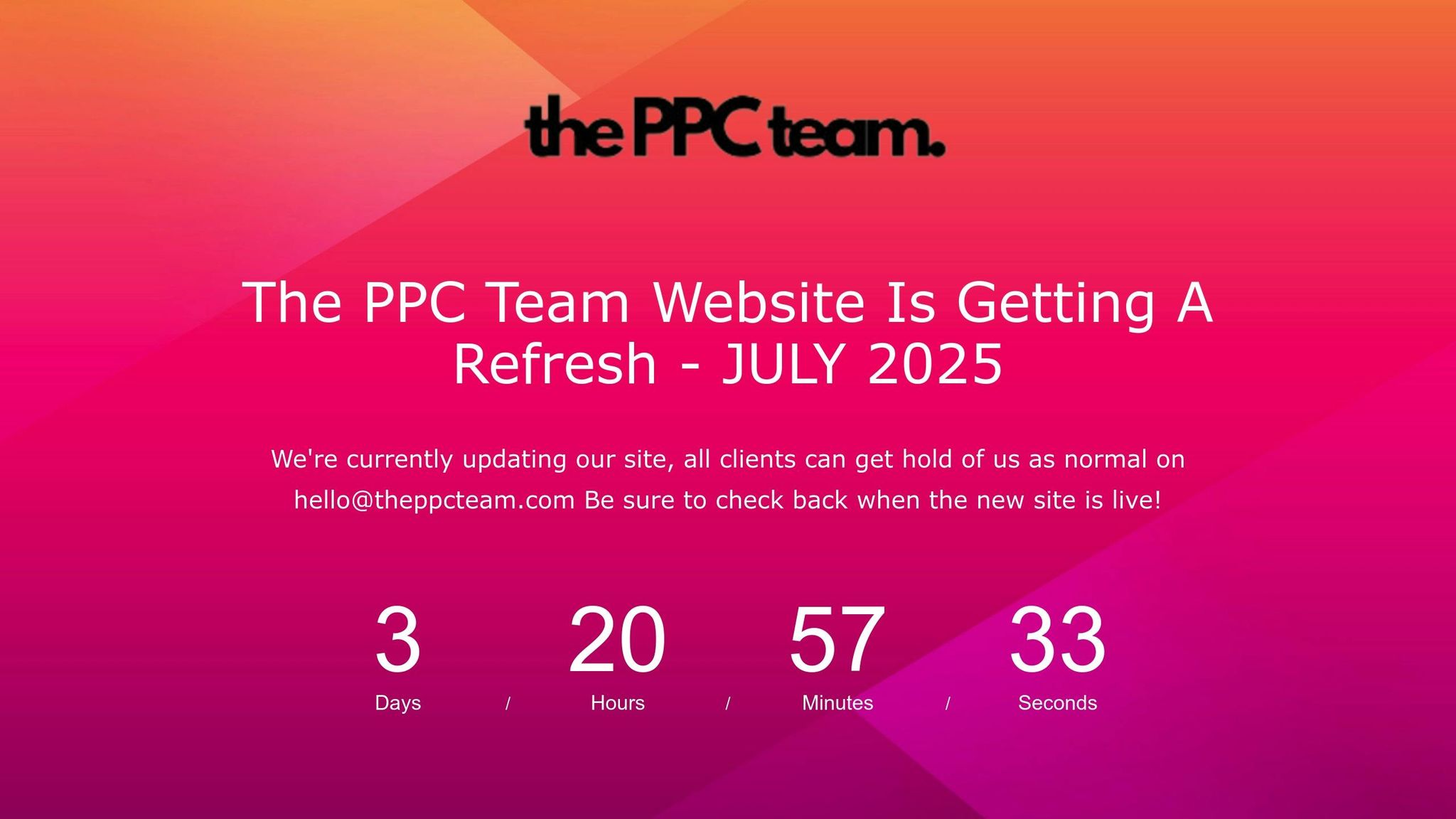
Analysing competitor ad copy can offer valuable insights, but turning those insights into action requires expertise and the right tools. That’s where the PPC Team excels. We take competitor intelligence and craft advertising strategies that deliver real, measurable results. Here’s how we transform those insights into powerful PPC campaigns.
Free PPC Audit: Your First Step
Our free PPC audit is the ideal starting point for building on competitor insights. It provides a clear picture of your current performance, highlighting gaps that competitors may be exploiting. The audit delivers actionable recommendations to improve ad campaigns, refine ad groups, and optimise budgets. It identifies underperforming areas and suggests specific ways to enhance your campaign’s effectiveness.
With global digital ad spend projected to hit around £600 billion by 2025, and PPC delivering an average return of £2 for every £1 spent, the potential for growth is undeniable.
Advanced Tools for Deeper Competitor Insights
We go beyond basic keyword research by using advanced monitoring tools to uncover messaging trends, seasonal opportunities, and untapped market gaps. This comprehensive analysis identifies areas where your ads can stand out while avoiding overused or overcrowded messaging. These insights allow us to create campaigns that resonate with your target audience and outperform competitors.
Targeted Strategies That Drive Results
Our team specialises in finding the right audiences, keywords, and ad placements using advanced A/B testing and remarketing techniques. Remarketing ensures that undecided visitors are re-engaged, increasing the chances of conversion.
Different platforms deliver varying returns: Google Ads typically sees a 2:1 ROI, Amazon Ads can achieve over 6:1, and Facebook Ads often exceed 10:1. By understanding these variations, we help you allocate your budget strategically to maximise returns based on your industry and audience.
Seamless Integration of PPC and CRO
We don’t stop at driving traffic. By integrating PPC strategies with conversion rate optimisation (CRO), we ensure that the traffic generated by your ads results in meaningful conversions. Our team refines landing pages with relevant content and persuasive calls-to-action, turning clicks into customers. We also analyse device performance data to adjust bids, recognising that visitors from platforms like Facebook or LinkedIn often convert at twice the rate of those from Google or Bing.
Detailed Reporting and Continuous Refinement
Our work doesn’t end with launching a campaign. We provide detailed reports that show how competitor-inspired strategies are improving your performance. Continuous optimisation is a key part of our process, as we refine ads, landing pages, and strategies based on performance data and shifting competitor tactics.
Additionally, we help you avoid common pitfalls such as using overly broad keywords, neglecting negative keywords, incorrect geo-targeting, or overlapping audience segments. This proactive approach ensures your campaigns stay ahead of the competition, even as market dynamics evolve.
Conclusion
Diving into competitor ad copy analysis is a smart move if you want to get the most out of your PPC campaigns. By figuring out what connects with your shared audience, you can create messaging that truly stands out – while avoiding the costly mistakes that come with trial-and-error approaches. A well-executed analysis not only saves money but also boosts your campaign’s overall effectiveness.
Studying your competitors’ strategies allows you to pinpoint market gaps, sharpen your value proposition, and stay flexible in a constantly changing landscape. Understanding their use of emotional triggers, compelling calls-to-action, and unique selling points can reveal strategies that work for your audience.
"By understanding what keywords and ad copy your competitors are using, you can gain valuable insights into their strategies and potentially uncover new opportunities for your own campaigns." – Naila Blogger, Assistant at Search Engine Optimization
Armed with these insights, you can refine your approach. Take note of the unique selling points your competitors emphasise, as well as their tone, emotional appeals, and urgency tactics. Don’t forget to factor in seasonal shifts in messaging and continuously test variations of your ad copy to see what resonates most.
Surprisingly, 72% of businesses fail to monitor their ad campaigns for over a month, missing out on valuable opportunities to leverage competitor intelligence. Regular analysis is essential to stay ahead in this fast-moving space. This is where professional expertise can make a difference. With support from a team like The PPC Team, you can turn competitor insights into impactful, results-driven campaigns, avoiding common missteps and maximising your ROI.
In short, combining the right tools, consistent analysis, and expert guidance can significantly elevate your PPC performance. Whether you’re just getting started or fine-tuning your strategy, competitor analysis lays the groundwork for campaigns that outshine the competition. Don’t wait – your competitors certainly aren’t.
FAQs
How does analysing competitor ad copy boost my marketing ROI?
Analysing your competitors’ ad copy can be a game-changer for your marketing efforts. It gives you a clear window into what captures your audience’s attention and drives engagement. By spotting effective trends, creative approaches, and messaging tactics, you can fine-tune your own campaigns to deliver better results without wasting resources.
This practice isn’t just about imitation – it’s about learning. You can leverage their successes while steering clear of the pitfalls they’ve encountered. Regularly reviewing competitor ads also keeps you ahead of the curve, helping you identify new market opportunities and adjust to shifting customer preferences. In the end, this approach makes your campaigns sharper, more efficient, and ultimately more profitable.
Which tools are best for analysing competitor ad campaigns and why?
Some of the most useful tools for digging into competitor ad campaigns are the Meta Ads Library and the Google Ads Transparency Centre. These platforms let you explore competitor ad creatives and landing pages for free, giving you a peek into their advertising tactics.
If you’re looking to dive deeper, tools like SEMrush and SpyFu can be game-changers. They’re great for uncovering keyword strategies and tracking the SEO performance tied to competitor campaigns. This kind of data can help you spot gaps in the market and fine-tune your own advertising strategy.
Using these tools, you can better understand how your competitors operate and create more informed, data-backed plans to improve your own campaigns.
How can I make my ads stand out after analysing competitor strategies?
To ensure your ads grab attention, emphasise what sets your business apart. Take advantage of competitor analysis to uncover gaps in their messaging and address those with clear, engaging ad copy designed specifically for your audience.
Shine a light on distinct advantages, create headlines that demand attention, and include strong calls-to-action that appeal to UK consumers. Incorporating local tastes, cultural references, and familiar language can strengthen engagement and make your ads resonate more deeply. By adopting this approach, your campaigns will have a better chance of making a lasting impact.

